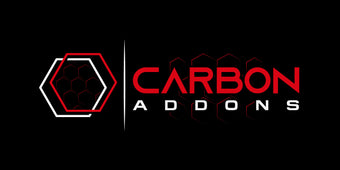Carbon fiber has become the material of choice for automotive enthusiasts and performance industries worldwide. Known for its strength-to-weight ratio, durability, and exotic appearance, it’s now found everywhere from race cars to motorcycles.
But here’s the catch: not all carbon fiber is created equal. The two most common manufacturing methods, Wet Carbon Fiber and Dry Pre-Preg Carbon Fiber, are very different in quality, weight, and performance.
🔹 What is Wet Carbon Fiber (Infusion/Lamination)?
Wet carbon is the more common and cost-effective process.
-
Process: Carbon fabric is laid in a mold, then resin is hand-applied or infused, and cured under heat.
-
Pros: Cheaper, glossy “wet-look” finish, widely available.
-
Cons:
-
Heavier (too much resin, less actual carbon fiber)
-
More imperfections (air bubbles, wavy weaves, resin pooling)
-
More prone to yellowing, warping, or cracking with UV exposure
-
🔹 What is Pre-Preg (Dry) Carbon Fiber?
Dry carbon is the motorsport and aerospace standard, used in Formula 1, supercars, and aircraft.
-
Process: Sheets are pre-impregnated with resin in precise amounts, then cured in an autoclave under extreme heat & pressure.
-
Pros:
-
Up to 60% lighter than wet carbon
-
Stronger and stiffer due to higher fiber-to-resin ratio
-
Crisp weave alignment and clean edges
-
UV-resistant finish that resists fading and yellowing
-
Fewer voids and pinholes, ensuring consistent strength
-
🔹 Dry vs Wet Carbon Fiber at a Glance
| Feature | Wet Carbon Fiber | Dry (Pre-Preg) Carbon Fiber |
|---|---|---|
| Weight | Heavier (resin-rich) | Lighter (optimized resin ratio) |
| Strength | Moderate, prone to defects | High-performance, aerospace grade |
| Finish | Glossy but yellows over time | Glossy or matte, UV protected |
| Consistency | Wavy, resin pooling common | Perfect weave, crisp details |
| Cost | Lower upfront | Higher, but long-term value |
🔹 Why Dry Carbon is Worth the Extra Cost
Yes, dry carbon is more expensive, sometimes 3–4x the cost of wet carbon. But here’s why enthusiasts and professionals prefer it:
-
Performance: Lighter weight = better handling, less stress on mounting points.
-
Durability: Longer life span, no fading or delaminating.
-
Precision: Consistent fitment, sharper detail, cleaner finish.
-
Quality Assurance: Motorsport-grade production methods.
Wet carbon is primarily cosmetic. Dry carbon offers both looks and performance.
🔹 Other Factors That Matter
-
Resins: We use premium epoxy resins with UV inhibitors, unlike cheaper polyester or vinylester resins that crack or discolor.
-
Weaves: Most enthusiasts choose 2x2 twill weave for flexibility and aesthetics, though plain and forged options exist.
-
Finishes: Gloss, matte, or satin coatings protect the material and enhance its appearance.
🔹 The Bottom Line
If you’re looking for true motorsport-grade parts, pre-preg dry carbon fiber is the superior choice. While wet carbon may appeal to budget shoppers who only want the “look,” dry carbon delivers the lightweight strength, longevity, and premium quality that serious enthusiasts demand.
